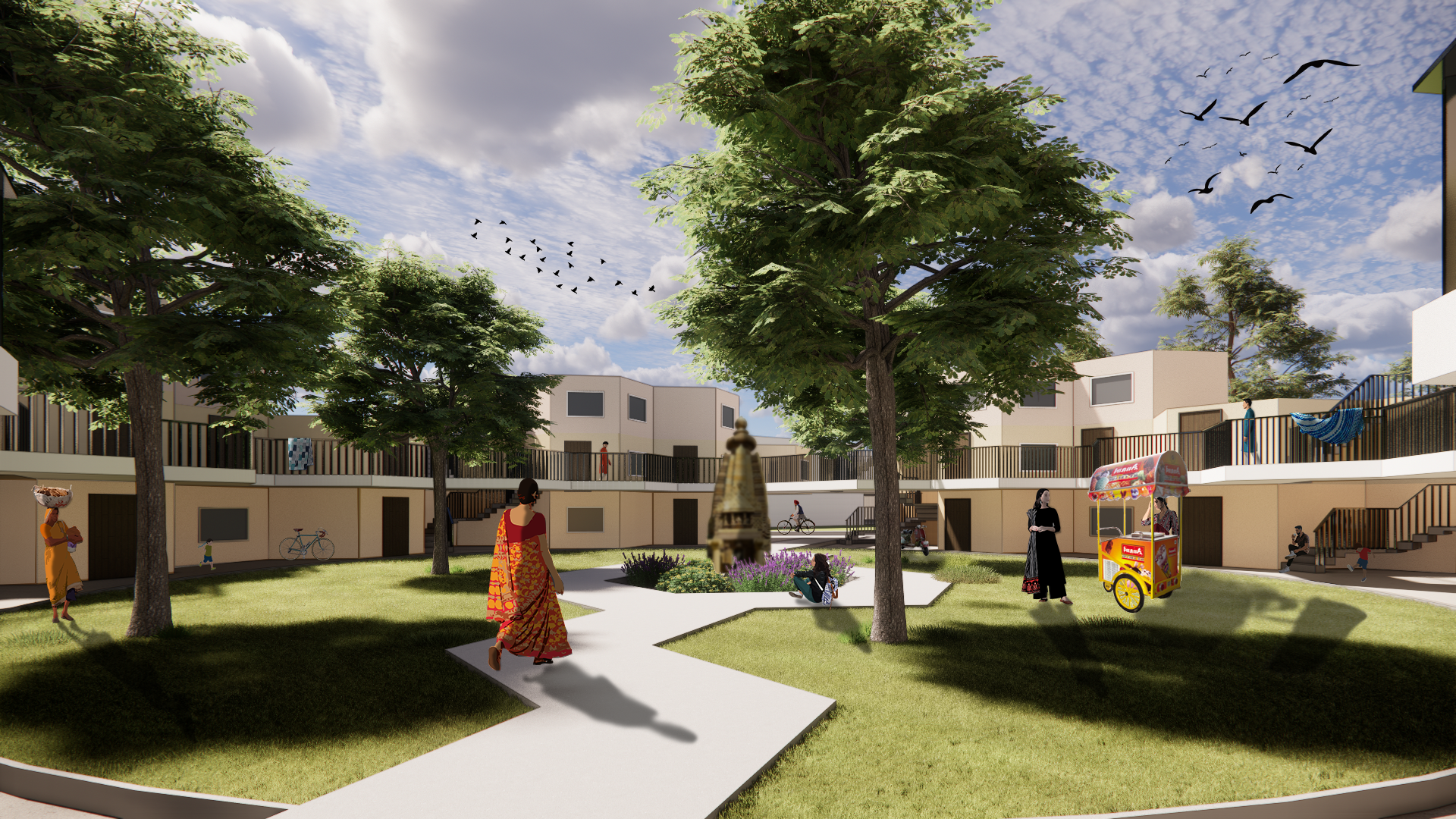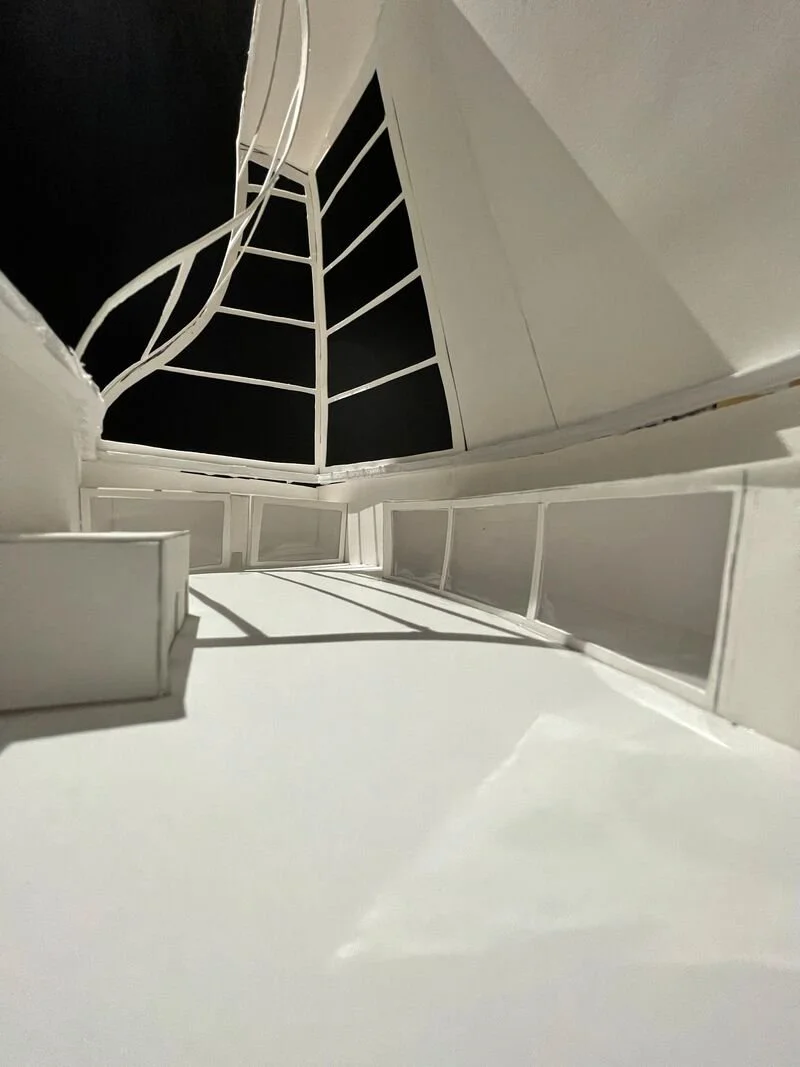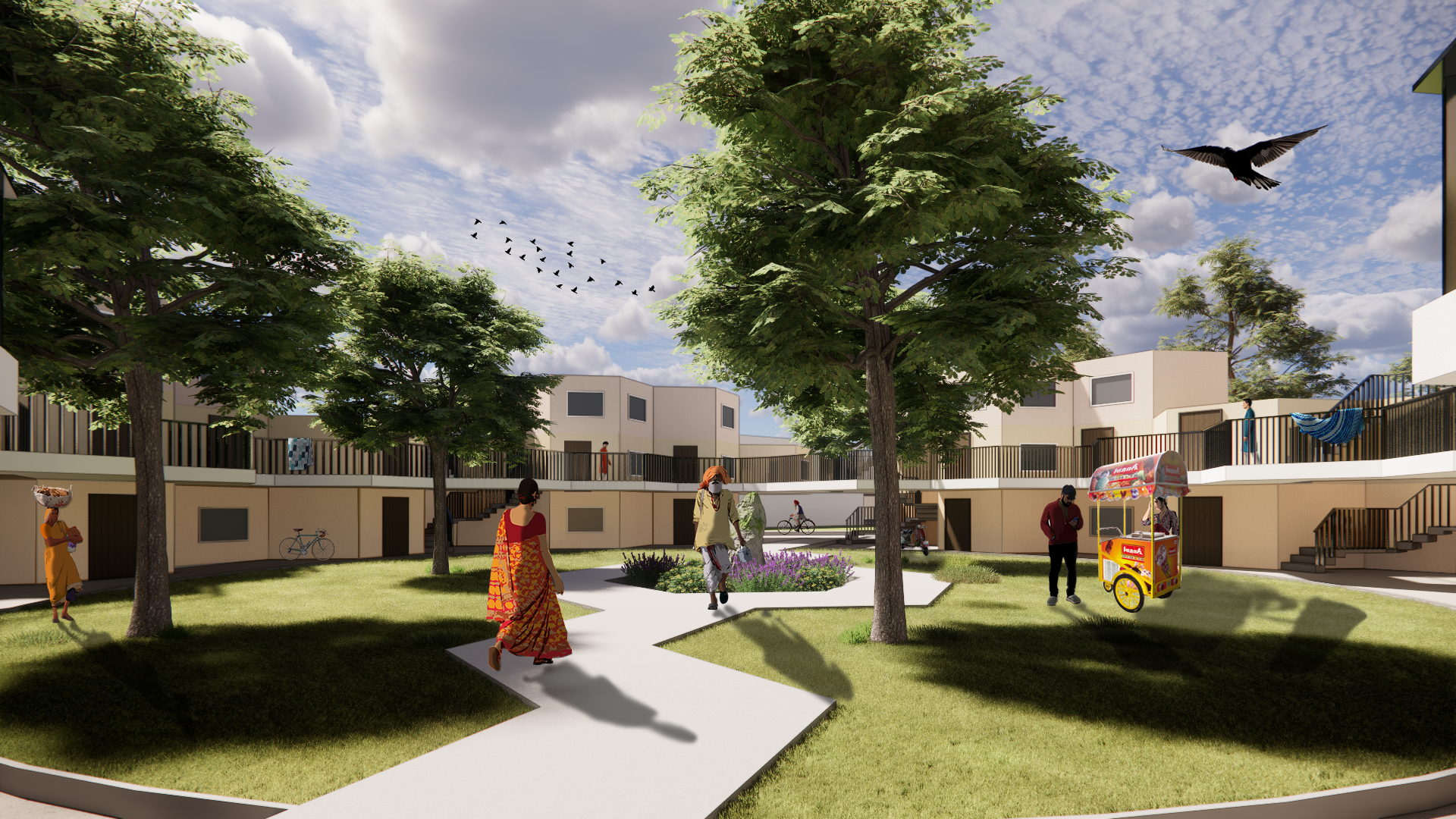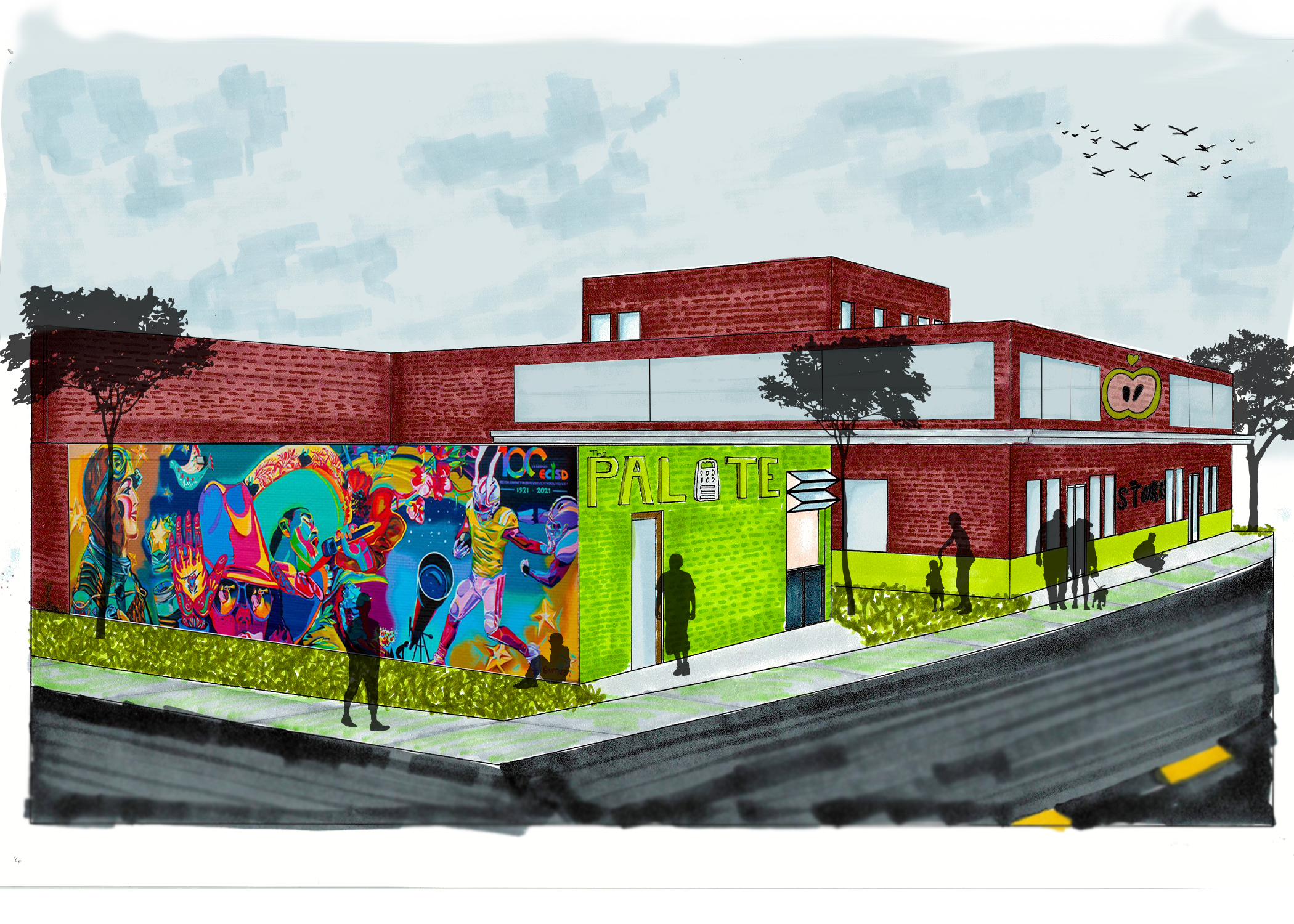
Ecological Responsibility
Ecological responsibility in architecture is vital for fostering sustainable practices that protect and enhance the environment. In both the academic program and the field at large, it emphasizes the importance of designing with an awareness of energy use, resource efficiency, and ecological impact. As a student, I’m actively learning how to incorporate eco-friendly materials and sustainable strategies into my designs. Looking ahead, I hope to engage in projects that prioritize environmental stewardship, creating buildings and spaces that not only meet human needs but also contribute positively to the planet’s health.
The Environment and Architecture
-

India Housing Project
The India Housing Project was unique in its approach to the area's environmental concerns. It used Micelium bricks as insulation to help absorb the abundant carbon dioxide in the air and utilized an off-site construction tactic that allowed for the local environment to be brought up to health code while the locals were across the river until the homes were finished.
-

Water Research Center
This project had two main focuses: the locals and the scientists. In regard to the environment, the objective of this project was to provide scientists and researchers with space to study the reservoir's water quality. I decided to create a wave effect on the roofs to showcase the work.
Related Reflections
Related Reflections
Responsibility to Mitigate Climate Change [LO-7]
October 7th, 2024
The relationship between the built and natural environments is more important now than ever due to the accelerating impacts of climate change. Buildings, infrastructure, and urban sprawl have significantly disrupted ecosystems, increasing carbon emissions, reducing biodiversity, and straining resources like water and energy. Construction activities alone are responsible for a large portion of global carbon emissions, not to mention the energy required to operate buildings over their lifetime. Climate change amplifies these problems, with rising temperatures, more frequent natural disasters, and shifting weather patterns putting additional stress on both natural and built systems. As an architecture student, I see the need to balance functionality and aesthetics with sustainability. Architects' choices—the type of materials used, the building’s orientation, or even the layout of a neighborhood—can have long-term effects on the environment. Architects are uniquely positioned to design spaces that not only meet human needs but also reduce the environmental footprint of our built environment. To reduce energy consumption, we can incorporate energy-efficient design principles, such as passive solar heating, natural ventilation, and insulation strategies. Additionally, sourcing materials locally or using recycled or renewable resources can help minimize the environmental impact of construction.
In the future, I plan to push these ideas further by considering how buildings can contribute to a circular economy, where resources are reused and waste is minimized. I’m interested in exploring how adaptive reuse—repurposing old buildings instead of demolishing them—can give new life to existing structures while conserving energy and materials. I also want to explore innovations like biomimicry, where natural systems inspire designs to create more sustainable, resilient buildings. Additionally, I believe architects have a role to play in advocating for policy changes that promote sustainable building practices. Working with clients, communities, and policymakers to raise awareness about the importance of reducing carbon emissions in the construction industry could lead to more widespread adoption of eco-friendly building standards, such as LEED certification or net-zero energy buildings.
Looking forward, I see my role as an architect as one that bridges creativity and environmental stewardship. I want to use design to not only create beautiful and functional spaces but also help address one of the biggest challenges of our time—climate change. By focusing on sustainability, I believe architects can help shape a future where the built environment coexists harmoniously with nature rather than contributing to its destruction.
Public Health, Safety, and Welfare [LO-8]
September 23rd, 2024
Architects have a major responsibility when it comes to shaping the built environment, and our work impacts not just the physical spaces we create, but also the natural world and the health, safety, and welfare of the public. Buildings contribute significantly to environmental challenges like energy consumption, carbon emissions, and resource depletion. If we aren't mindful of these issues, our designs can worsen problems like climate change, pollution, and even poor public health outcomes. This makes it essential for architects to prioritize ecological sustainability and resilience, not just as a trend but as a professional obligation.
From an environmental standpoint, architects can take steps to reduce a building’s carbon footprint and overall impact. This includes designing energy-efficient structures, using renewable resources like solar or wind power, and selecting sustainable building materials. Incorporating features like natural lighting, proper insulation, and green spaces can also make buildings more eco-friendly while enhancing the quality of life for those who use them. In this way, architects play a key role in environmental stewardship by designing buildings that not only reduce harm but can actually improve the health of the surrounding environment. Beyond the environmental impact, architects have a responsibility to protect public health, safety, and welfare. This is where factors like air quality, natural lighting, and access to outdoor spaces become crucial. Poorly designed buildings can have long-term negative effects on occupants, like exposure to toxic materials or lack of proper ventilation, leading to health issues. But buildings designed with these concerns in mind can actually improve physical and mental well-being. For example, promoting access to natural light and ventilation can make indoor environments healthier, while ensuring safety through fire-resistant materials or accessible design can protect people in emergencies.
Looking to the future, I see my role as an architect as one that involves a continuous commitment to integrating ecological principles and public welfare into my work. One key area I want to focus on is the use of advanced building technologies to improve building performance and resilience. This means incorporating renewable energy sources, using smart building systems to optimize energy use, and designing adaptable structures that can withstand climate-related challenges, like rising sea levels or more extreme weather patterns. Additionally, I plan to advocate for sustainability not just in individual projects, but also in the broader community and industry. By promoting green building certifications like LEED and encouraging clients to invest in energy-efficient designs, I can help shift the industry toward more sustainable practices. I also want to stay up to date on new technologies and strategies, whether it's innovations in building materials or research on how design impacts public health, so I can continue to push my designs to be as responsible and forward-thinking as possible.
In my portfolio, I’ll highlight evidence of this professional responsibility through projects that prioritize sustainability, like my work with solar shading systems, adaptive reuse designs, and energy-efficient strategies. This will demonstrate how I’ve already begun incorporating these values into my work, and it will serve as a foundation for the environmentally conscious and socially responsible architecture I plan to pursue throughout my career. Ultimately, my goal is to be part of a generation of architects that not only shapes the built environment but does so in a way that contributes to a healthier, safer, and more sustainable world for everyone.
India Housing Project
-Focused on the cleaning of the surrounding environment and creating an efficient city layout for locals to thrive in.
The Store Project
-Focused on the community and providing for the locals through healthy food, community gatherings, dignity, and a love for the surrounding environment and its people.

